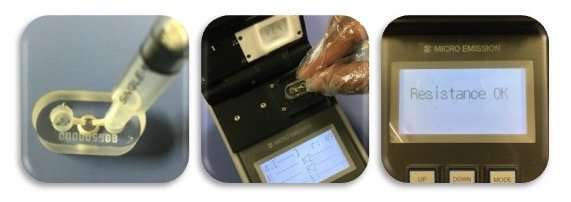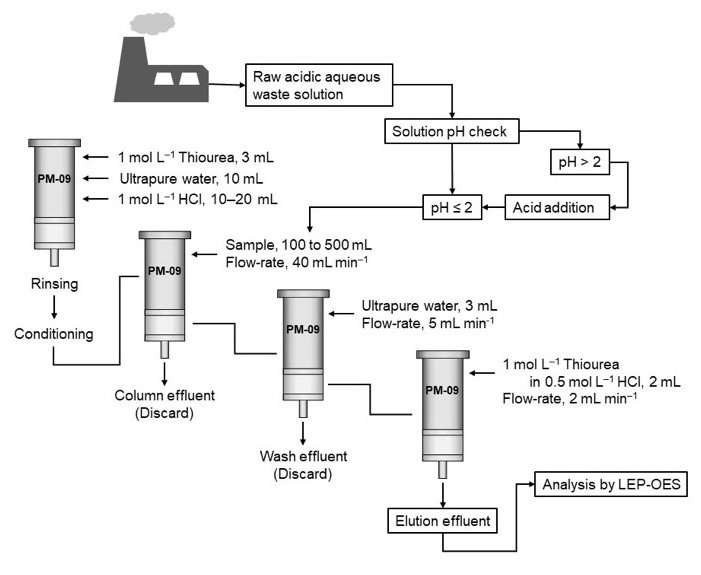High-precision, on-site analysis of precious metals in metallurgical waste spills

Precious metals are finite resources in high demand. They are mainly obtained through mining, but researchers are exploring the possibility of recycling them from metallurgical waste leachates, water that has passed through the treated materials during mineral processing and thus contains some of their compounds. To this end, compact and portable instruments for rapid, on-site analysis of wastewater are highly desirable to improve the efficiency of the recovery of precious metals.
Liquid-electrode plasma-optical emission spectrometry (LEP-OES) has emerged as a tool to implement on-site analysis of elements in aqueous matrices, as it is portable and much less costly than traditional methods. However, when the concentration of noble metals is very low, as is the case for precious metals in waste spills, the sensitivity of the technique is insufficient to produce accurate analysis—one of the problems is that in metallurgical waste leachates, there are several ions that interfere with the analysis. In this case, analyte separation and enrichment steps (that is, steps that remove other substances and increase the concentration of the analyte to make detection easier) have to be included in the analysis of the samples for accurate detection of the precious metals.
Suman Barua, Ismail M.M. Rahman, Hiroshi Hasegawa and colleagues from Kanazawa University and Fukushima University have accompished this, reporting the first application of LEP-OES in combination with a solid-phase extraction (SPE) system (which is used as the pre-treatment step to eliminate the competing ions and to enrich the noble metals) for rapid, on-site simultaneous detection of gold, palladium and platinum. The SPE parameters were optimized to maximize retention and recovery of the precious metals; and the LEP-OES parameters were optimized to maximize the emission peaks for the individual elements. The method was tested both on certified reference material for wastewater and on real aqueous waste samples, from which more than 95 percent of the precious metals were recovered. The high-precision on-site measurements could be performed in less than 15 minutes, opening the way to practical analysis of the precious metal content of wastewater.

More information: Suman Barua et al, On-site analysis of gold, palladium, or platinum in acidic aqueous matrix using liquid electrode plasma-optical emission spectrometry combined with ion-selective preconcentration, Sensors and Actuators B: Chemical (2018). DOI: 10.1016/j.snb.2018.05.132
Provided by Kanazawa University



















